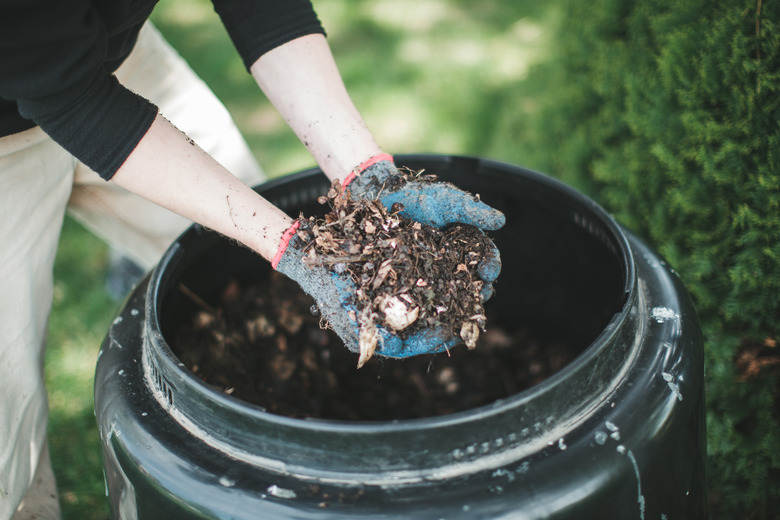What Is The Difference Between Compost And Potting Soil?
We may receive a commission on purchases made from links.
Compost is a highly valued amendment used to improve soil texture and add nutrients. Potting soil is a completely different bird, designed as a sanitary environment for germinating seeds or for providing a well-textured medium that supports plants growing in pots. Understanding the difference between compost and potting soil will ensure that you use the correct material depending on the application.
Tip
Potting soil usually has few nutrients, depending on its composition. These products are designed to provide a sanitary environment that will nurture plants growing in a container. Compost, on the other hand, has nutrients galore and is used to improve soil structure and enrich the soil.
Soil vs. Potting Mix
Soil vs. Potting Mix
Soil is a broad term and can mean either the native soil in a landscape or specially designed soil for a particular purpose. Potting mix rarely contains soil.
Soil is a naturally occurring substance that is made up of a mixture of minerals, water, air, organic matter, gas, and decaying organisms. If you dig into the soil in your backyard, you'll note that it's comprised of layers, the top of which is humus or mostly organic matter, followed by a layer called "topsoil." Below the topsoil is an "eluviated" layer that's a concentration of clay, minerals, and organic matter, and beneath that is the subsoil layer, which is rich in minerals that have leached from upper levels. This is followed by what's called "parent material," a deposit that forms the basis of soil development, and then bedrock at the bottom.
The soil available to you in your landscape has a soil texture, defined by its ratio of the three main elements: sand, silt, and clay. You might find "topsoil" for sale, which is a good material when creating raised beds or improving existing soil.
Potting mix, on the other hand, may not even contain soil; in fact, most commercially sold mixtures do not. Rather, it's usually a mixture of compost, peat moss, and perlite or vermiculite. Perlite is a porous, lightweight substance that looks like small, white balls but is made from volcanic glass; vermiculite is composed of a mixture of silicate materials of magnesium, aluminum, and iron. Both are used to aerate the mixture and improve the soil structure. A well-aerated mix supports germination and avoids a waterlogged pot.
Potting mix is good for container gardening to avoid waterlogged soils and to control soil texture and structure. Remember, though: most potting mixes contain no fertilizer or nutrients, so you'll need to regularly fertilize any plants growing in containers.
Compost vs. Soil
Compost vs. Soil
Compost is highly prized by gardeners as a soil amendment to add nutrients and improve soil texture. It's made of decomposed organic matter. Add compost to clayish soils to improve drainage and to sandy soils to increase their ability to hold water.
Often called "black gold" by gardeners, compost improves the health of the soil, and making compost in your backyard also provides an effective way to manage what might otherwise be called "waste" — grass clippings, leaves, and kitchen scraps, which, when mixed, can make a fine compost.
References
- University of Illinois Extension: Composting in the Home Garden
- Washington State University: Compost Fundamentals
- Exploratorium Science of Gardening: The Dirt on Dirt
- University of Florida: Potting Soil, Topsoil, Compost, Seed Starting Potting Mix – What's the Difference?
- The Nature Education Knowledge Project: What Are Soils?
